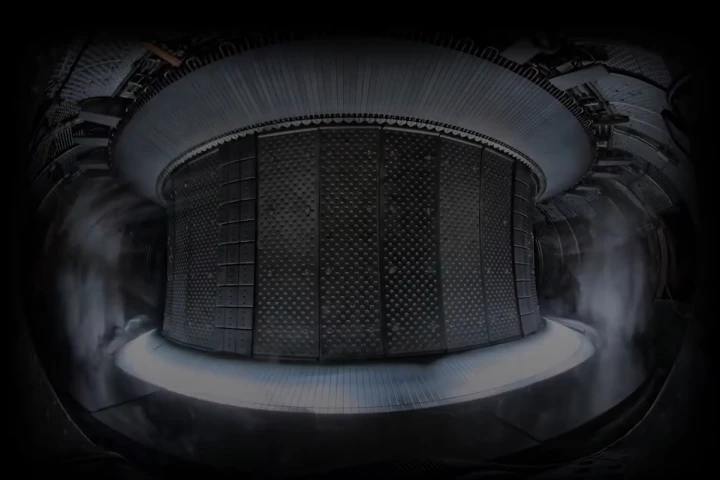In order to treat injured joints, patients are often advised to apply heat. This typically takes the form of a hot water bottle or microwavable hot pack (which are cumbersome and cool off) or a heating pad (which needs to be plugged in). Now, however, scientists from Korea and the US have created a battery-powered thin mesh that applies heat and stays put.
The mesh consists of interlocking coiled silver nanowires, which are sandwiched between two insulating yet breathable layers of a transparent thermoplastic elastomer. Both the wires and the elastomer are able to expand and contract, conforming to the contours of joints such as knees and wrists. Cuffs made from the mesh remain in place and continue to emit heat, even when those joints are moving.

According to the scientists, although similar devices have been created previously, they tended to incorporate complex production processes or costly materials such as carbon nanotubes and gold. By contrast, this mesh should be comparatively simple and inexpensive to manufacture.
Along with its use in rehabilitative therapy, it has been suggested that the technology could also find use in applications such as ski jackets or heated car seats.
The research team included scientists from Korea's Institute for Basic Science, Seoul National University and Pusan National University, along with Harvard University in the US.
Source: Institute for Basic Science
In order to treat injured joints, patients are often advised to apply heat. This typically takes the form of a hot water bottle or microwavable hot pack (which are cumbersome and cool off) or a heating pad (which needs to be plugged in). Now, however, scientists from Korea and the US have created a battery-powered thin mesh that applies heat and stays put.
The mesh consists of interlocking coiled silver nanowires, which are sandwiched between two insulating yet breathable layers of a transparent thermoplastic elastomer. Both the wires and the elastomer are able to expand and contract, conforming to the contours of joints such as knees and wrists. Cuffs made from the mesh remain in place and continue to emit heat, even when those joints are moving.

According to the scientists, although similar devices have been created previously, they tended to incorporate complex production processes or costly materials such as carbon nanotubes and gold. By contrast, this mesh should be comparatively simple and inexpensive to manufacture.
Along with its use in rehabilitative therapy, it has been suggested that the technology could also find use in applications such as ski jackets or heated car seats.
The research team included scientists from Korea's Institute for Basic Science, Seoul National University and Pusan National University, along with Harvard University in the US.
Source: Institute for Basic Science




